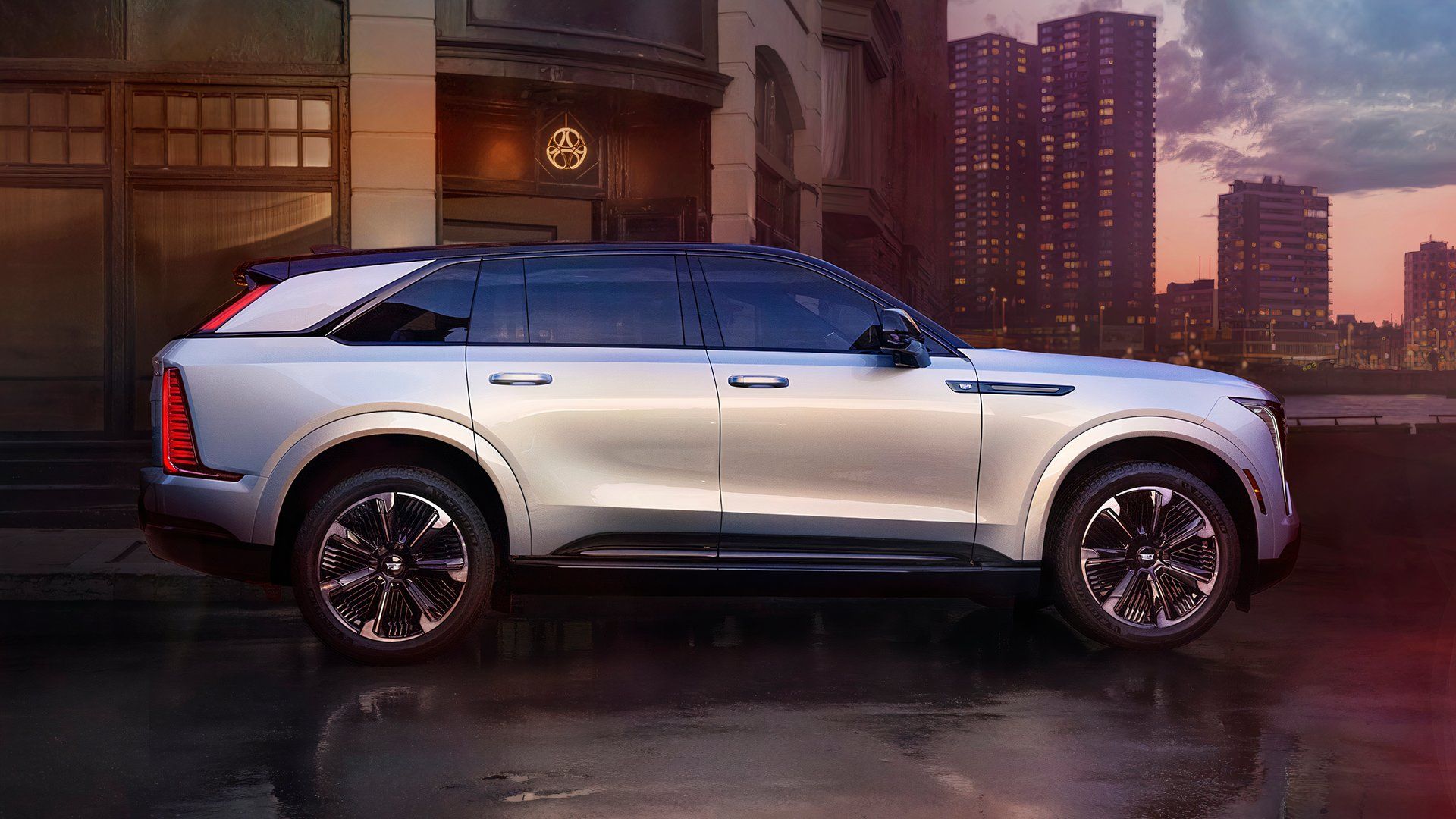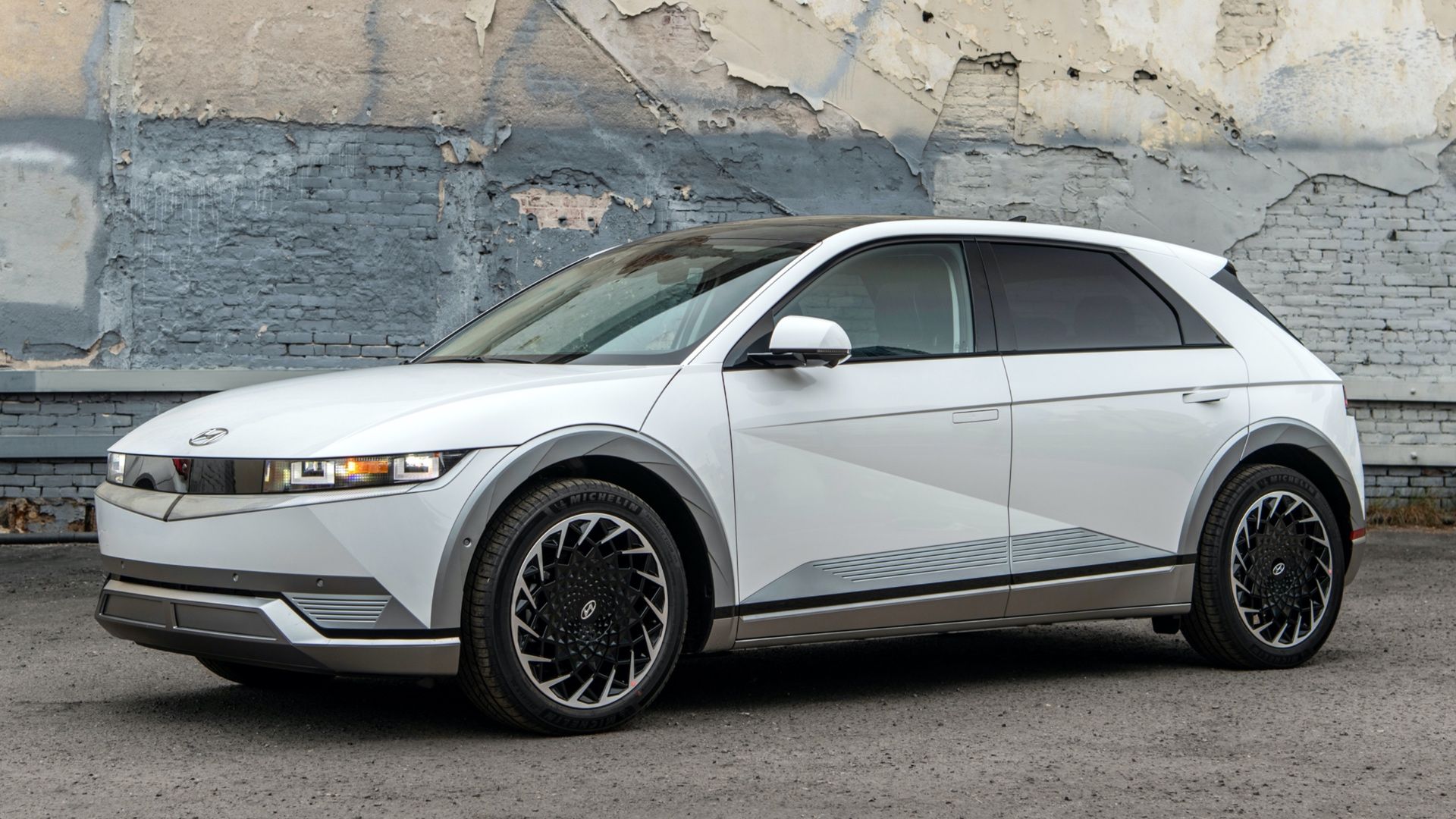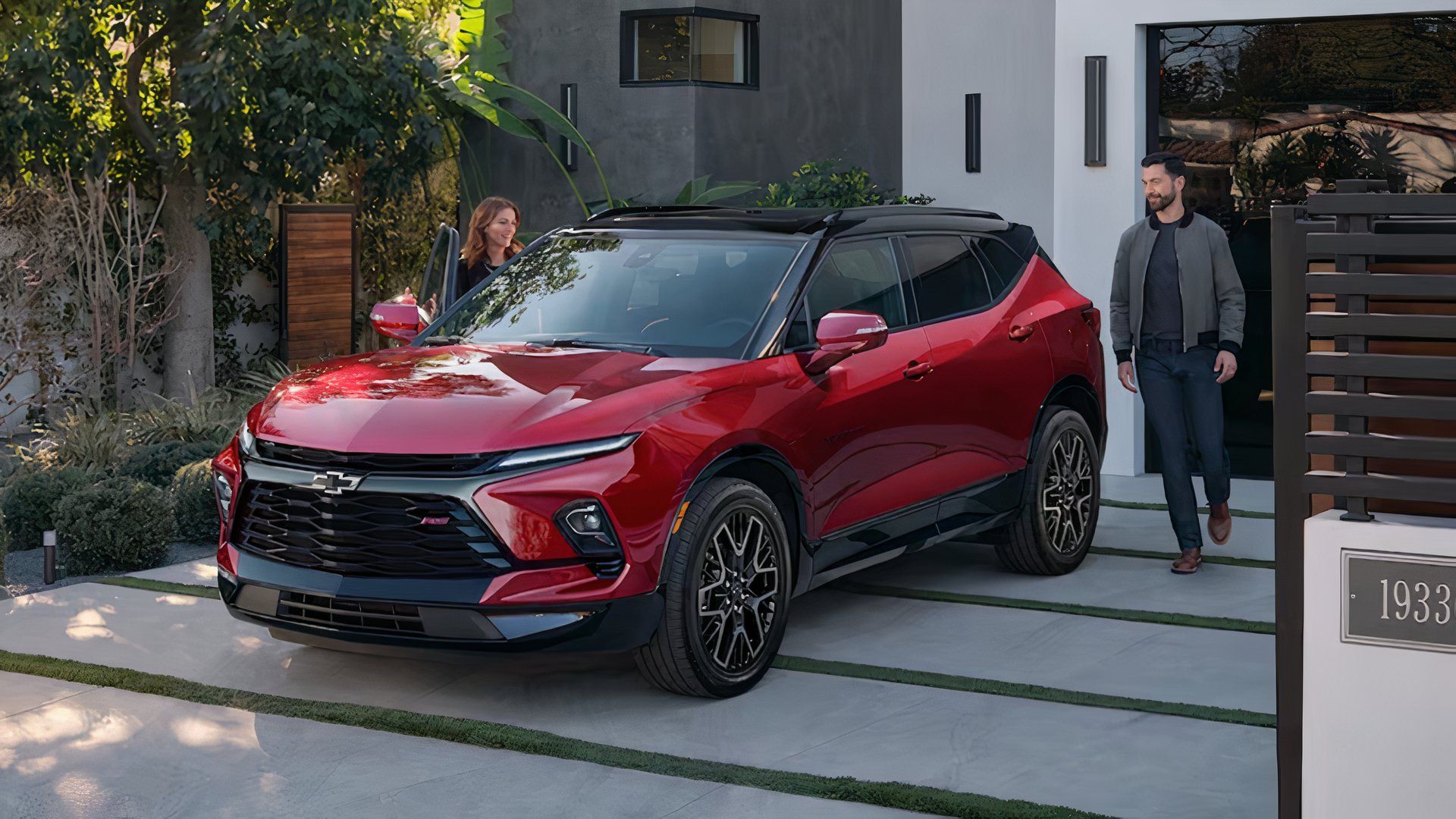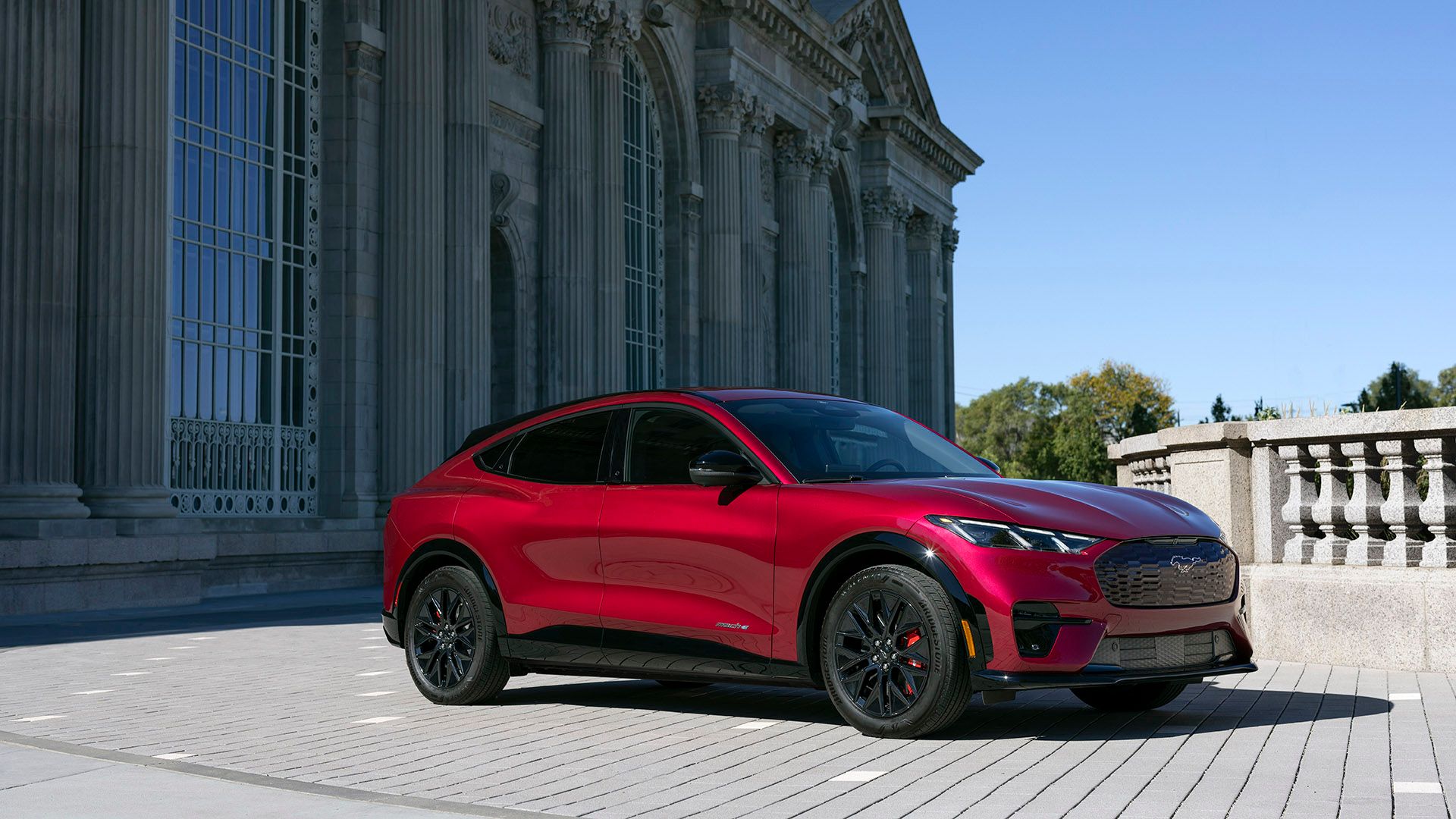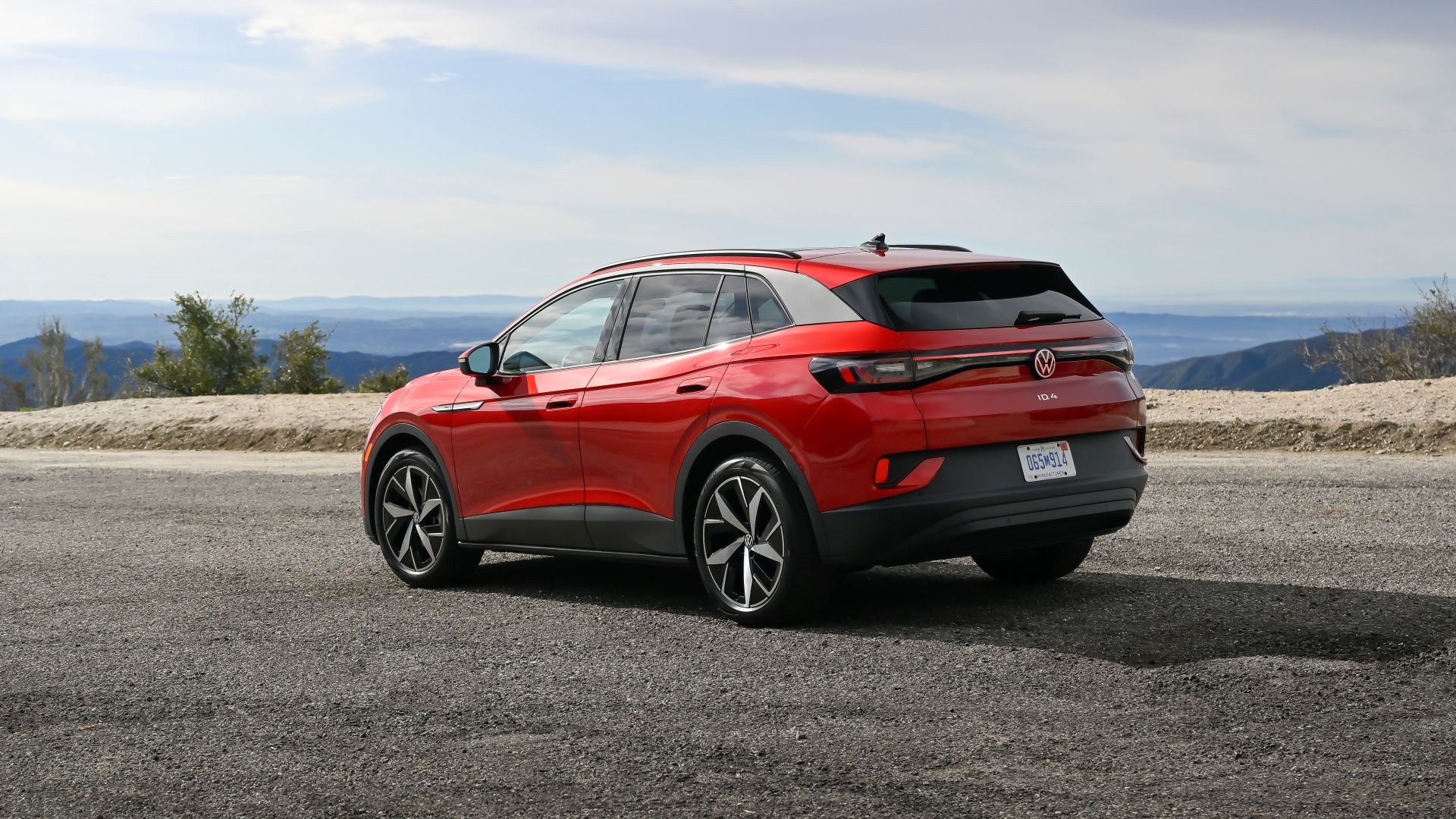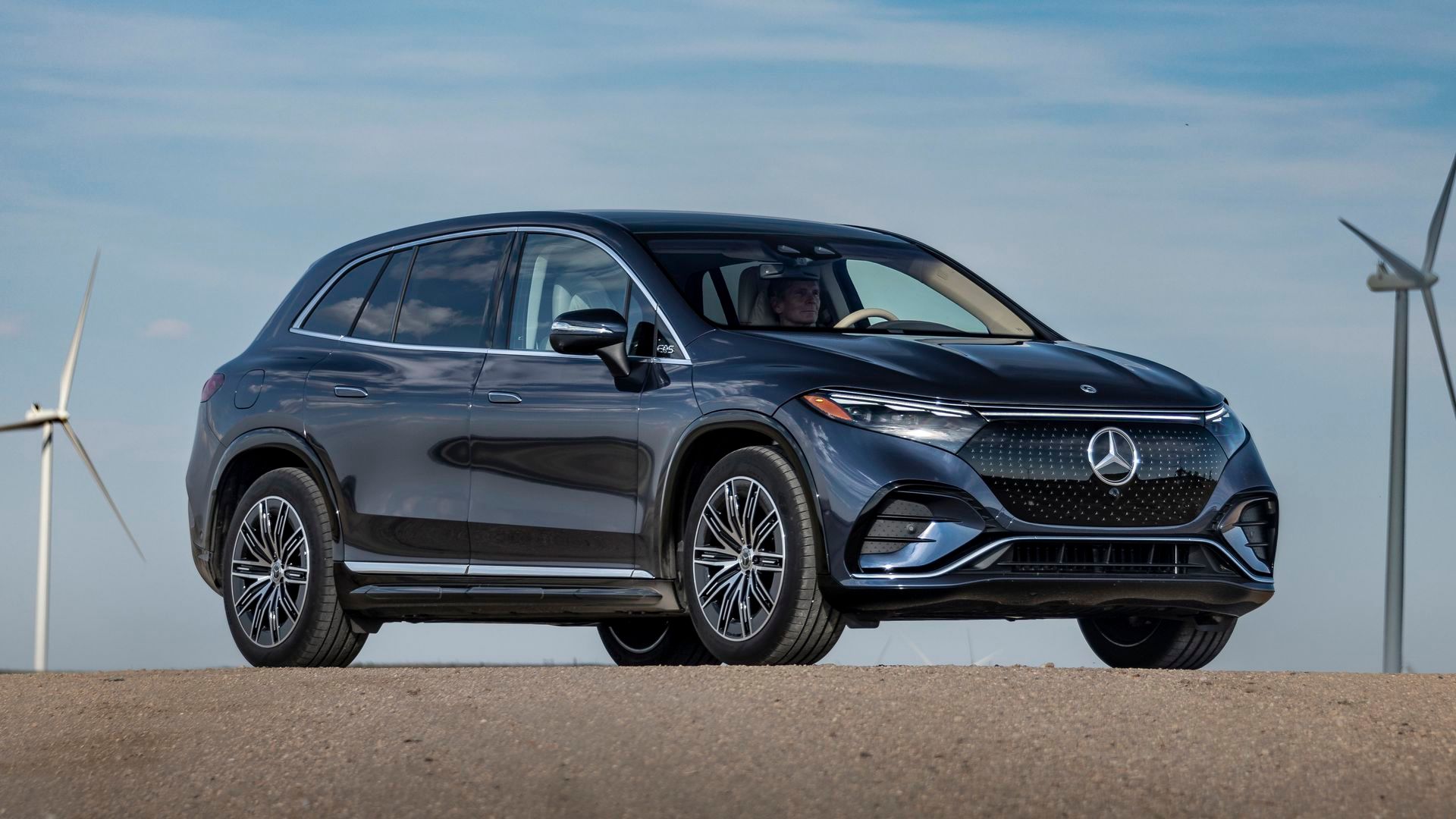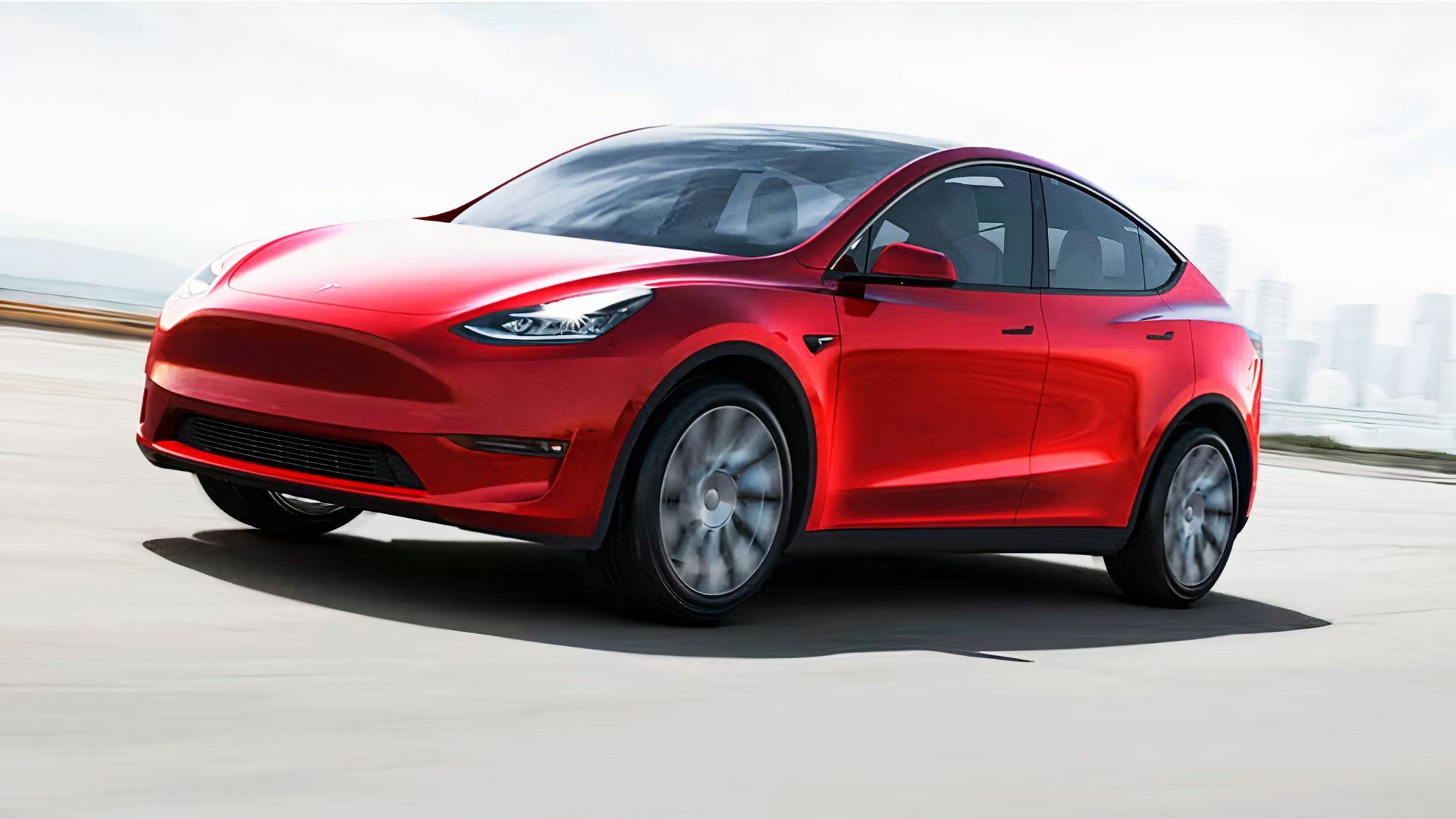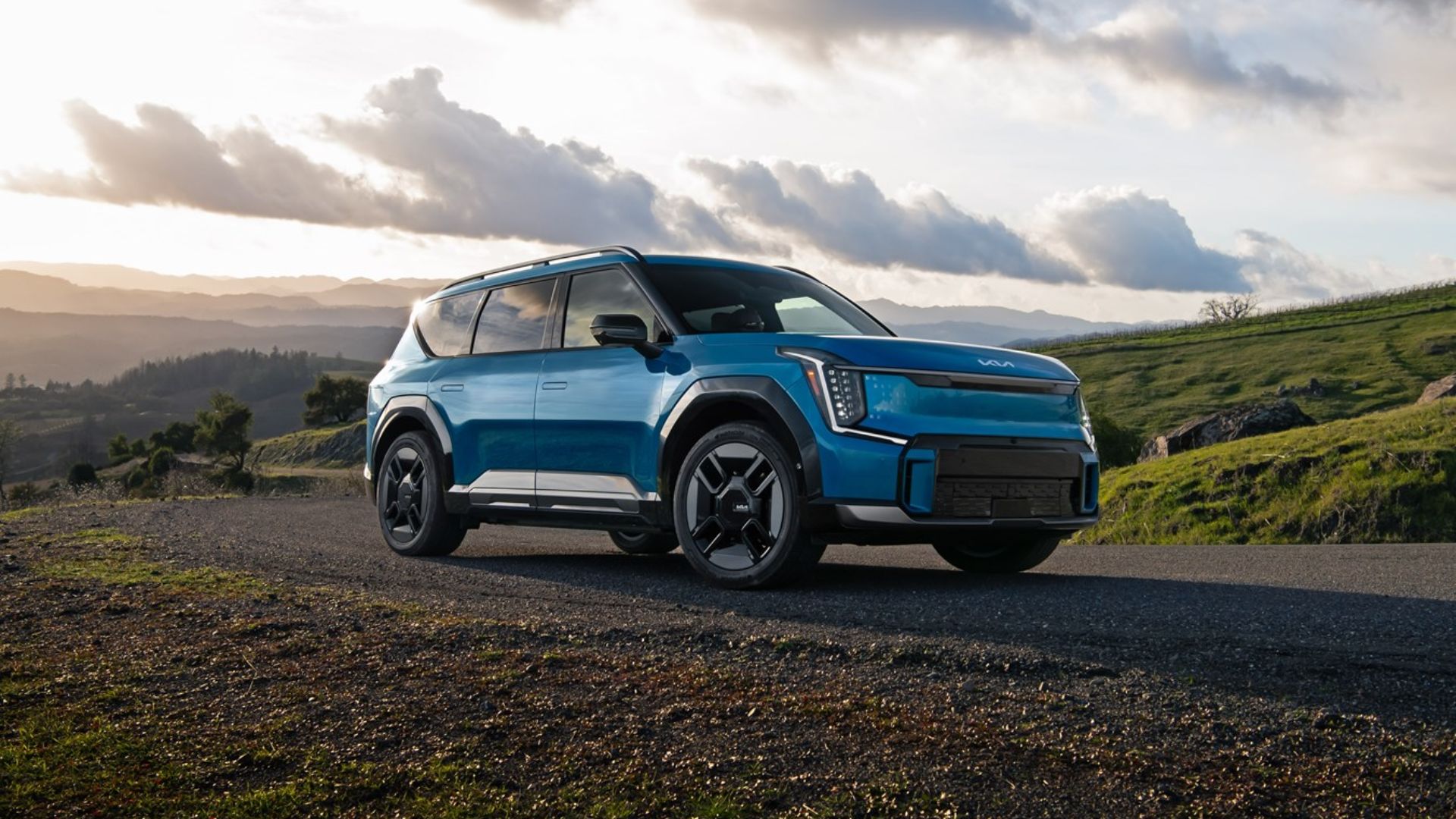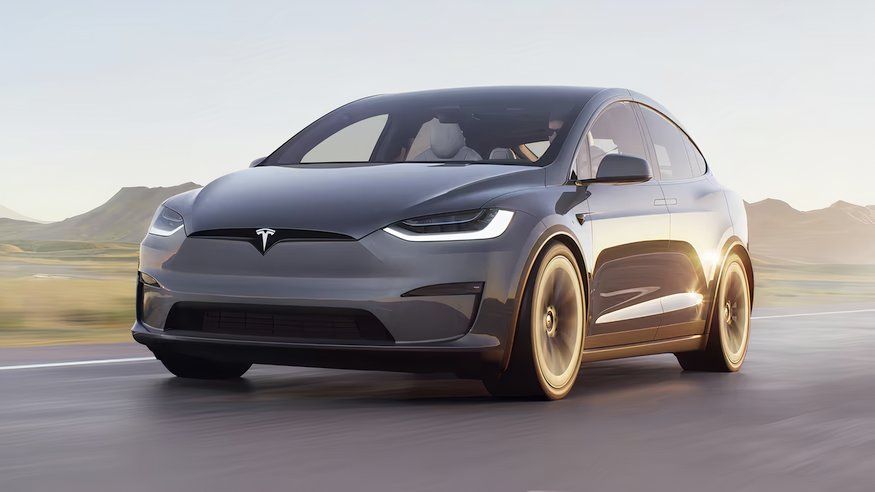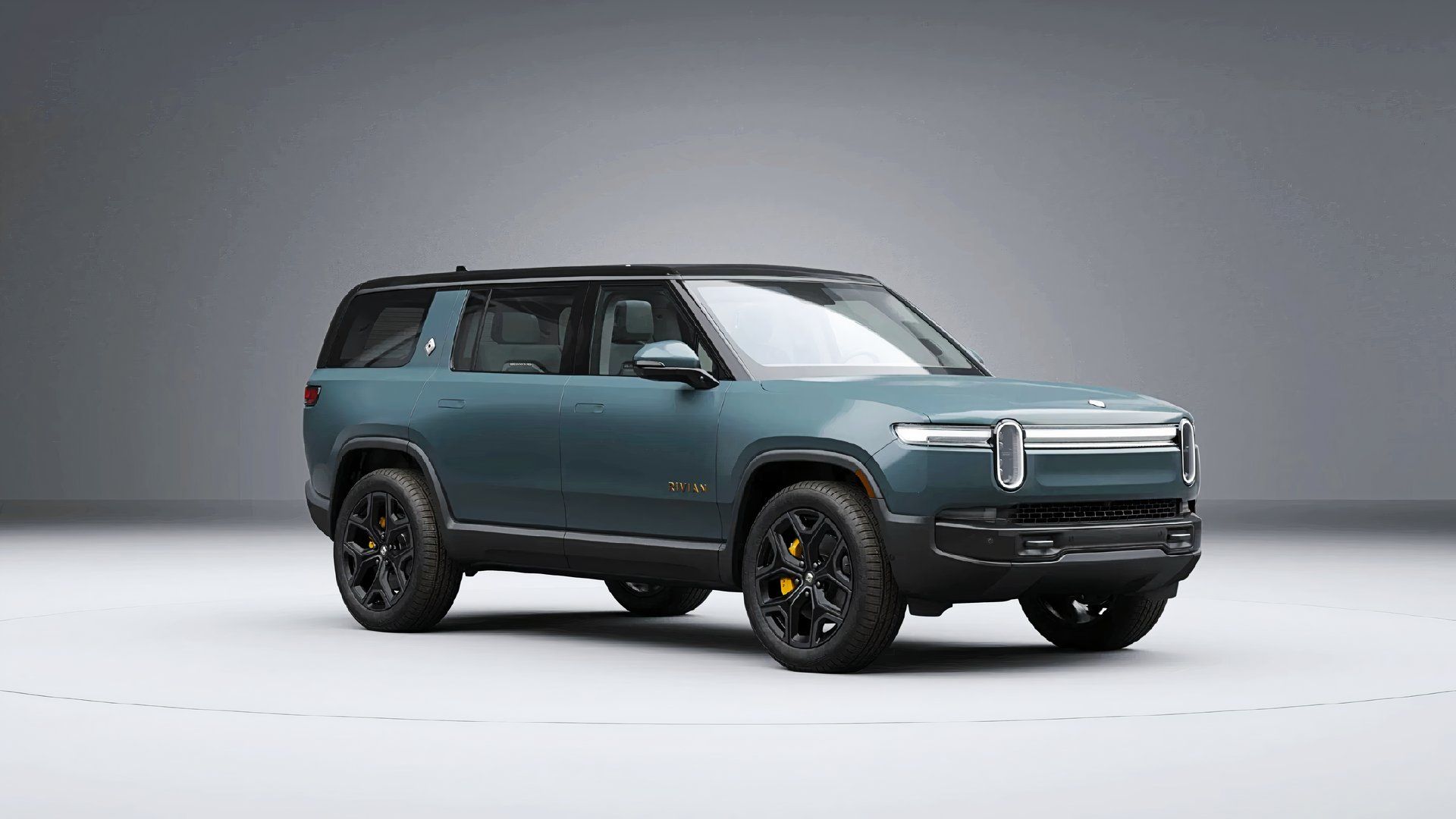Over the last couple of decades, an overwhelming number of drivers have switched to pickup trucks, SUVs, and crossovers, whether they really need something so big or not. But, this shift is not all bad, because utility vehicles do, of course, have advantages over four-door cars. People often enjoy the elevated ride height for easier ingress and egress as well as better visibility; SUVs also typically have optional all-wheel drive, which amenity sedans don’t usually offer; and finally, utility vehicles generally have significantly more cargo space than traditional passenger cars, which makes them ideal for families.
Given their popularity, it’s easy to understand why automakers, as they transition to an electrified future, have introduced so many battery-powered utility vehicles. Motorists have decided they want SUVs instead of sedans, and the best opportunity for manufacturers to sell as many EVs as possible is to offer plenty of all-electric utility vehicles. For active families that want to go electric, here are 10 versatile battery-powered SUVs with surprisingly generous cargo space.
In order to give you the most up-to-date and accurate information possible, the data used to compile this article was sourced from various manufacturer websites and other authoritative sources, including J.D. Power and Edmunds.com. The models below have been ranked based on their cargo space
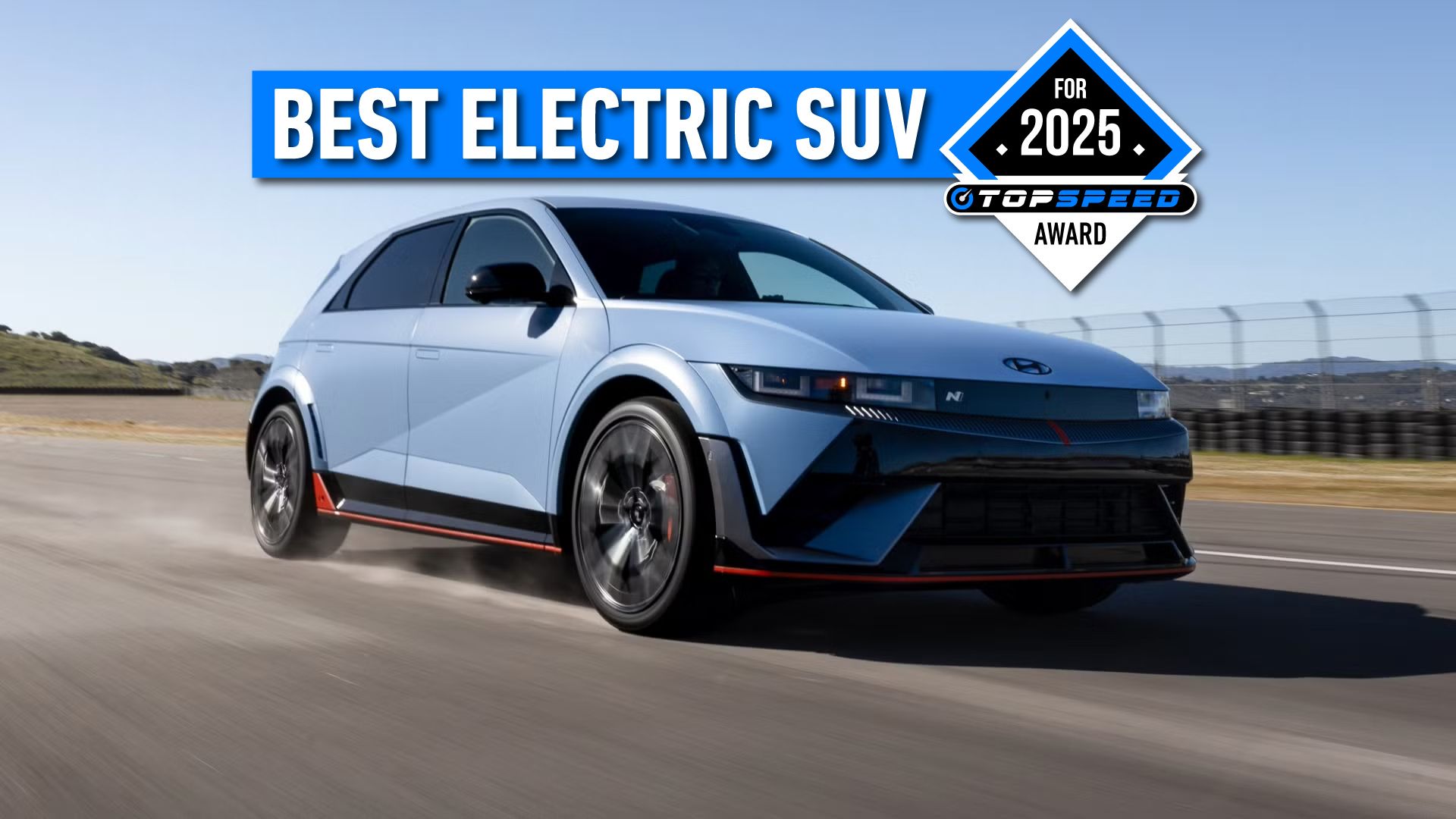
Related
TopSpeed’s Best Electric SUV Of The Year Is The 2025 Hyundai Ioniq 5 N
The most powerful Hyundai yet has plenty of tricks up its sleeve.
10
Hyundai Ioniq 5
Max Cargo Space: 58.5 cubic feet
Just like Chevy’s Blazer EV, the Hyundai Ioniq 5 is another high watermark for EV design. This hatchback-like crossover wears styling that’s unlike anything else you can get on another new vehicle today. The Ioniq 5 is boxy and angular, with various creases and hard lines in its body. Front and rear, the lighting signature is uniquely pixelated, too, for an unmistakable look.
When it comes to cargo space, this Hyundai is both better and worse than its rival from Chevrolet. The Ioniq 5 has 26.3 cubic feet of room behind the second-row seat, less than the Blazer EV, however, when the rear backrest is folded down, the overall number clocks in at 58.5, a whisker more than the Chevy. There’s also a tiny front trunk (or “frunk” if you prefer) that clocks in at 0.85 cubes.
Performance Specifications
|
Max Interior Cargo Space |
58.5 cubic feet |
|
Rear Cargo Space |
26.3 cubic feet |
|
Front Trunk |
0.85 cubic feet |
|
Total Cargo Space |
59.4 cubic feet |
|
Drivetrain |
RWD / AWD |
|
Range |
Up to 303 miles |
|
Charging |
DC fast charging, ~20 min (10-80%) |
|
Horsepower |
168 to 320 |
Available with rear- and all-wheel drive, the Ioniq 5 (excluding the incredibly potent N high-performance model) has between 168 and 320 horses, and this vehicle provides up to 303 miles of range on a full charge. In addition to all that, though, this EV is also a charging champion. When hooked to an appropriate DC fast charger, this vehicle can rocket from a 10 percent state of charge to 80 percent in just about 20 minutes, an absolutely fantastic performance.
(59.4)
Pros
- Unique styling
- Nicely designed interior
- Superb DC fast charging performance
Cons
- Looks aren’t for everyone
- The range could be better
9
Chevrolet Blazer EV
Max Cargo Space: 59.1 cubic feet
Inside and out, one of the more stylish vehicles on this roundup is the Chevy Blazer EV. With a wide, planted stance, pronounced fender creases, large wheels and a thoughtfully designed interior, this bow tie-branded SUV is attractive and very well-built.
But it’s not just a pretty face, the Blazer is also versatile, smartly engineered, and powerful. This vehicle offers nearly 26 cubic feet of cargo space behind the second-row seat, a number that grows to in excess of 59 cubes when the backrests are folded down.
Performance Specifications
|
Max Cargo Space |
59.1 cubic feet |
|
Rear Cargo Space |
25.8 cubic feet |
|
Front Trunk |
No |
|
Drivetrain |
FWD / AWD |
|
Range |
Up to 324 miles |
|
Charging |
DC fast charging, ~30 min (10-80%) |
|
Horsepower |
288 to 340 |
Aside from all that versatility, the Blazer EV is also a fundamentally great electric vehicle. It’s available with either front- or all-wheel drive, offers up to 324 miles of range (when properly equipped) and the DC fast charging performance is impressive, too. The Blazer EV is able to charge from 10 to 80 percent in around 30 minutes. Depending on the model, you also get anywhere between 288 and a whopping 340 horsepower for good performance.
Pros
- Aggressive styling
- Upscale interior
- Good performance
Cons
- No front trunk
- Could DC fast charge quicker
8
Ford Mustang Mach-E
Max Cargo Space: 59.7 cubic feet
Next up, we have the Ford Mustang Mach-E. This all-electric SUV doesn’t DC fast charge anywhere near as quickly as the Hyundai Ioniq 5, and the overall design is much more conventional, but this is still a highly enjoyable, stylish, and versatile EV, especially if you opt for the performance-focused GT model.
The Mach-E offers up to 320 miles of range if you opt for the rear-drive model with the extended-range battery pack. Of course, examples equipped with all-wheel drive, or the above-mentioned GT variant will not go as far on a full charge. This Ford can DC fast charge from 10 to 80 percent in around 45 minutes, a decent but not outstanding performance.
Performance Specifications
|
Max Interior Cargo Space |
59.7 cubic feet |
|
Rear Cargo Space |
29.7 cubic feet |
|
Front Trunk |
4.7 cubic feet |
|
Total Cargo Space |
64.4 cubic feet |
|
Drivetrain |
RWD / AWD |
|
Range |
Up to 320 miles |
|
Charging |
DC fast charging, ~45 min (10-80%) |
|
Horsepower |
266 to 480 |
As for cargo space, the Mach-E provides 29.7 cubic feet of junk-hauling room behind the rear seat and 59.7 cubes with the backrest folded down. This SUV also has an under-hood front trunk that’s good for another 4.7 cubic feet.
(64.4)
Pros
- Generous cargo space
- Jaunty styling
- Good performance
Cons
- DC fast charging could be better
- Not everyone will want a Mustang EV
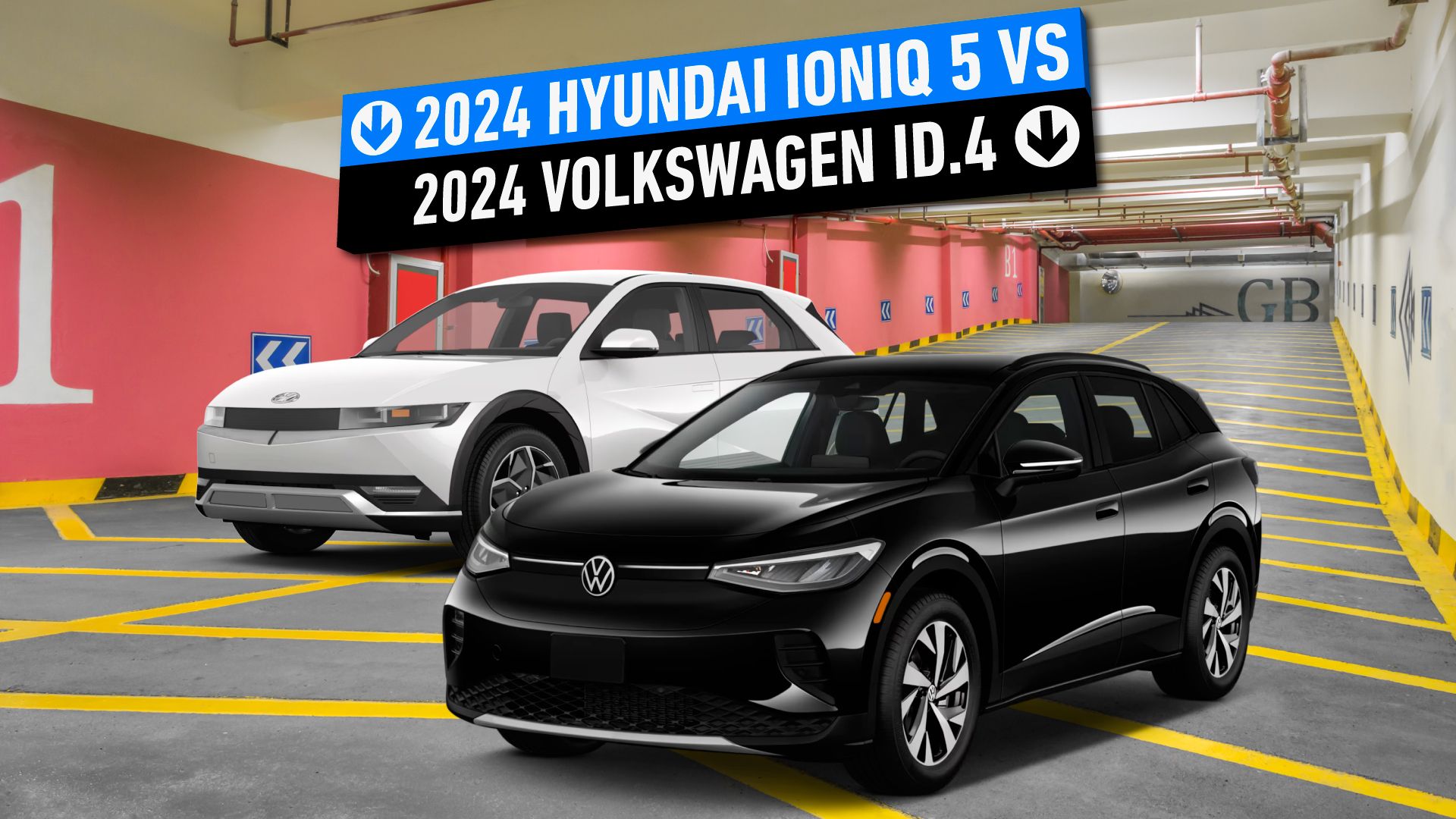
Comparison
2024 Hyundai Ioniq 5 Vs 2024 Volkswagen ID.4
Compare the Hyundai Ioniq 5 and Volkswagen ID.4 to see which one is the best all-electric SUV for you.
7
Volkswagen ID.4
Max Cargo Space: 64.2 cubic feet
One of the best values in the EV world today is the unassuming Volkswagen ID.4. This battery-powered SUV offers a surprising amount of interior space, it has a low floor height making it easier to load cargo into the hold, and this SUV is well-built and cleanly styled.
The ID.4 provides 30.3 cubic feet of space behind the rear backrest, more than the Mach-E, Ioniq 5 and Blazer EV. When you fold everything down, that number increases to a surprisingly capacious 64.2. How’s that sound?
Performance Specifications
|
Max Interior Cargo Space |
64.2 cubic feet |
|
Rear Cargo Space |
30.3 cubic feet |
|
Front Trunk |
No |
|
Drivetrain |
RWD / AWD |
|
Range |
Up to 291 miles |
|
Charging |
DC fast charging, ~30 min (10-80%) |
|
Horsepower |
201 to 335 |
As for technical details, this Volkswagen offers up to 291 miles of range, which is an adequate if not outstanding estimate, and the ID.4 can DC fast charge from 10 to 80 percent in an estimated 30 minutes. Depending on configuration, this all-electric SUV delivers between 201 and 335 horses.
Pros
- Attractive design
- Roomy interior
- Good build quality
Cons
- No front trunk
- More range would be nice
- Confusing model range
6
Mercedes-Benz EQS SUV
Max Cargo Space: 74.0 cubic feet
OK, now we’re movin’ on up! The battery-powered SUVs highlighted thus far on this list are all mainstream offerings from Chevy, Hyundai, Ford and Volkswagen, but now it’s time to dip a toe into the luxury end of the market. The Mercedes-Benz EQS SUV is a large, versatile, comfortable and absolutely opulent vehicle.
With standard all-wheel drive, this battery-powered Benz offers up to 323 miles of range when fully juiced up, a more-than-respectable figure for a vehicle of this size and class. That battery pack also DC fast charges reasonably well, going from a 10 percent state of charge to 80 percent in around 31 minutes.
Performance Specifications
|
Max Interior Cargo Space |
74.0 cubic feet |
|
Rear Cargo Space |
23.0 cubic feet |
|
Front Trunk |
No |
|
Drivetrain |
AWD |
|
Range |
Up to 323 miles |
|
Charging |
DC fast charging, ~31 min (10-80%) |
|
Horsepower |
355 to 536 |
Putting that power to good use, the EQS SUV has anywhere between 355 and 536 horses, more than enough giddy-up for hauling a whole load of cargo. When it comes to space, you get 23 cubic feet behind the rear seat and more than 74 when the backrest is dropped.
Pros
- Great performance
- Opulent trimmings
- Excellent comfort
Cons
- It ain’t cheap
- Other electric SUVs offer more space
- There’s no front trunk
5
Tesla Model Y
Max Cargo Space: 76.2 cubic feet
Pop quiz: What is the bestselling EV in the world? If you guessed the GMC Hummer EV Pickup, BMW iX or Rolls-Royce Spectre, you’d be exceptionally wrong. The world’s most popular electric is actually the Tesla Model Y, which should have been obvious based on the headline of this section.
Anyway, the five-seat version of this SUV offers up to 76.2 cubic feet of cargo space with the rear backrests folded. If they’re in the upright position, that figure is around 30.2 cubes. Tesla also offers a Model Y with a third-row seat, which is extremely useful, but does cost a few cubic feet of cargo space. Additionally, there’s a small 4.1-cubic-foot frunk for storing more odds and ends.
Performance Specifications
|
Max Interior Cargo Space |
76.2 cubic feet |
|
Rear Cargo Space |
30.2 cubic feet |
|
Front Trunk |
4.1 cubic feet |
|
Total Cargo Space |
80.3 cubic feet |
|
Drivetrain |
RWD / AWD |
|
Range |
Up to 337 miles |
|
Charging |
DC fast charging, ~31 min (10-80%) |
|
Horsepower |
384 to 456 |
In Long Range Rear-Wheel-Drive form, the Model Y offers an impressive 337 miles of range. Opting for larger wheels, getting all-wheel drive or going with the Performance model all reduce that range estimate, so be aware. Additionally, this SUV should be able to DC fast charge from 10 to 80 percent in around 31 minutes.
Pros
- Superb range
- Excellent DC charging performance
- Strong acceleration
Cons
- Some issues with past models
- Not everyone likes Tesla these days
- Starting to get a little dated
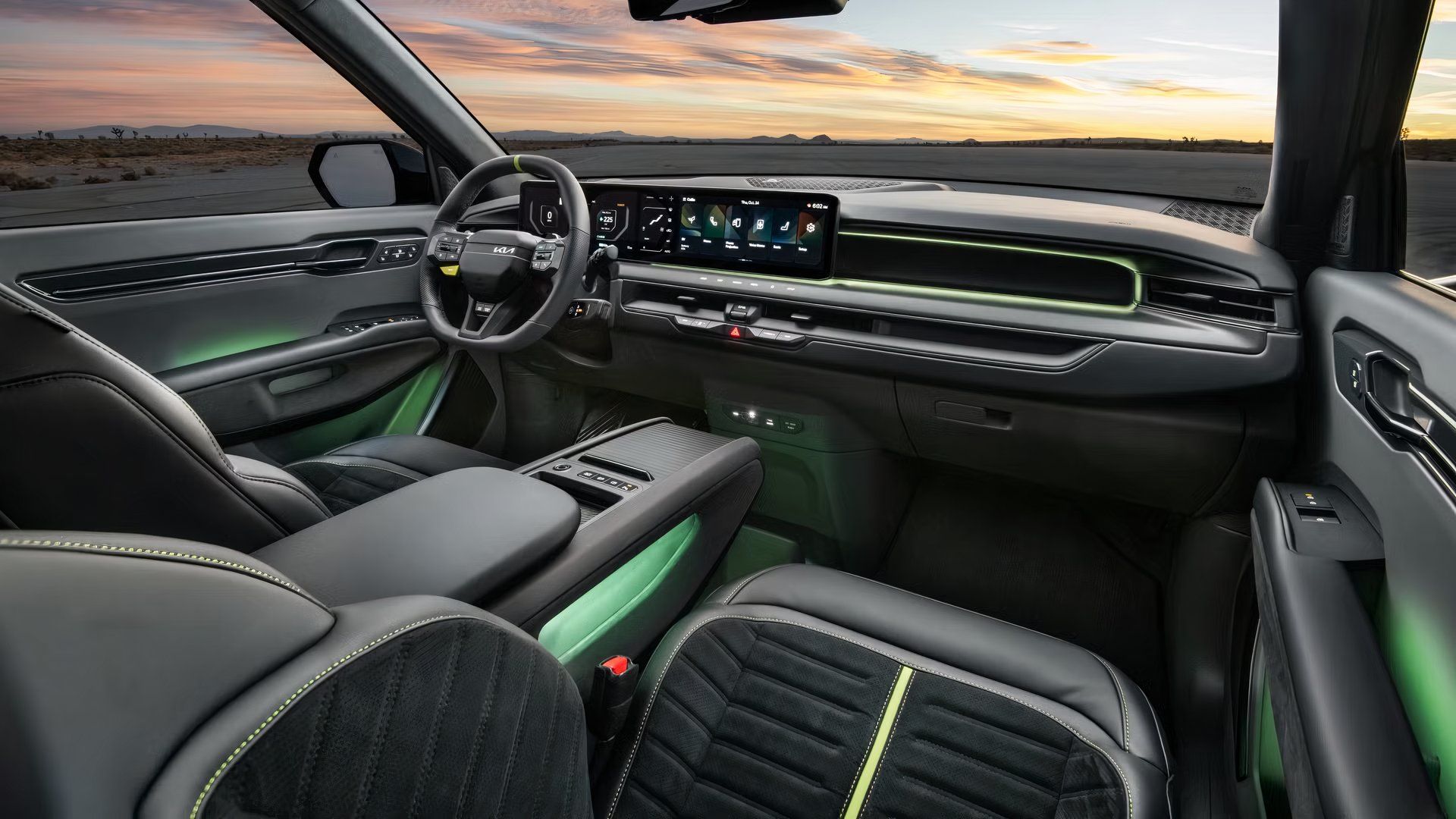
Related
Inside The Kia EV9: A Spacious, High-Tech Interior For The Future
The Kia EV9 delivers an optimal cabin interior with innovative technology, convenient storage, and, best of all, plenty of space.
4
Kia EV9
Max Cargo Space: 81.7 cubic feet
If you’re looking for an all-electric SUV with three rows of seats, your choices are, regrettably, very limited, especially if you can’t swing the monthly payment for a luxury model. But one EV that’s just about ideal for families is the stylish and spacious Kia EV9.
What does this SUV offer? Well, you get 20.2 cubic feet of space behind the rear-most seat and nearly 82 cubes when all the backrests are folded down. But, the EV9 is much more than just a rolling crate on wheels.
Performance Specifications
|
Max Interior Cargo Space |
81.7 cubic feet |
|
Rear Cargo Space |
20.2 cubic feet |
|
Front Trunk |
3.2 cubic feet |
|
Total Cargo Space |
105.1 cubic feet |
|
Drivetrain |
RWD / AWD |
|
Range |
Up to 304 miles |
|
Charging |
DC fast charging, ~24 min (10-80%) |
|
Horsepower |
201 to 379 |
When properly equipped, this vehicle provides up to 304 miles of all-electric range. Models fitted with the larger, 99.8-kWh battery can DC fast charge at an incredible rate, zipping from 10 to 80 percent in an estimated 24 minutes. As for horsepower, it ranges from 201 on the low end up to a far more than adequate – if not quite staggering – 379 horses.
Pros
- Thoughtful features abound
- Beautiful interior
- Plenty of cargo space
Cons
- Styling might be too adventurous
- 201 hp is probably too little for a vehicle this size
- Styling not for everyone
3
Tesla Model X
Max Cargo Space: 92.3 cubic feet
If there were an award for the most unique doors in the automotive industry today,
the Tesla Model X
would probably win the trophy thanks to its falcon wing rear doors that open up above the roof. Whether this is a better solution than conventional swinging doors is a matter of personal opinion, but there’s more to this SUV than just unusual design features.
Depending on the configuration, the Tesla Model X has 15.0 cubic feet of cargo space behind the available third-row seat and up to 92.3 cubes with all the rear backrests folded down. Not bad, eh? There’s also a 6.5-cubic-foot frunk.
Performance Specifications
|
Max Interior Cargo Space |
92.3 cubic feet |
|
Rear Cargo Space |
15.0 cubic feet |
|
Front Trunk |
6.5 cubic feet |
|
Total Cargo Space |
98.8 cubic feet |
|
Drivetrain |
AWD |
|
Range |
Up to 329 miles |
|
Charging |
Tesla Supercharger Network |
|
Horsepower |
670 to 1,020 |
With the regular model, you get standard all-wheel drive and up to 329 miles of EPA-estimated range if you stick with the 20-inch wheels that are included at no extra cost. Opting for the available 22s or going for the high-performance Plaid model, which offers more than 1,000 horsepower, does reduce the range, but not by a huge amount.
Pros
- Good range
- Standard all-wheel drive
- Generous cargo space
Cons
- Falcon Wing doors could be an issue
- Not cheap
- Not everyone will want a Tesla
2
Rivian R1S
Max Cargo Space: 104.7 cubic feet
The newer and much more conventional Rivian R1S is a lovely alternative to the somewhat avant-garde Model X. This adventure-ready SUV offers plenty of off-road capability along with a huge amount of cargo space, making it ideal for families that love to venture off the beaten trail. Here’s a little about what makes the R1S such a great all-electric SUV.
For starters, the dual-motor model standard all-wheel drive and the Max battery pack provide an estimated 410 miles of range. That pack can also DC fast charge from 10 to 80 percent in around 45 minutes. This variant of the R1S also provides 665 hp, enough to propel this bulky-three-row SUV to 60 mph in as little as 3.4 seconds. For drivers that want even more performance, Rivian will also offer tri- and quad-motor models with even more power.
Performance Specifications
|
Max Interior Cargo Space |
104.7 cubic feet |
|
Rear Cargo Space |
17.6 cubic feet |
|
Front Trunk |
11.1 cubic feet |
|
Total Cargo Space |
115.8 cubic feet |
|
Drivetrain |
AWD |
|
Range |
270 to 410 miles |
|
Charging |
DC fast charging, ~45 min (10-80%) |
|
Horsepower |
533 to 850 (1,025 in the future) |
When it comes to versatility, the R1S offers plenty. You get about 17.6 cubic feet of room behind the third-row seat. Fold everything down, and that number grows to a borderline-staggering 104.7 cubes. Beyond all that, there’s also an 11.1-cubic-foot frunk.
Pros
- Off-road capability
- Great tech
- Excellent versatility
Cons
- Base model has a limited range
- Princely pricey
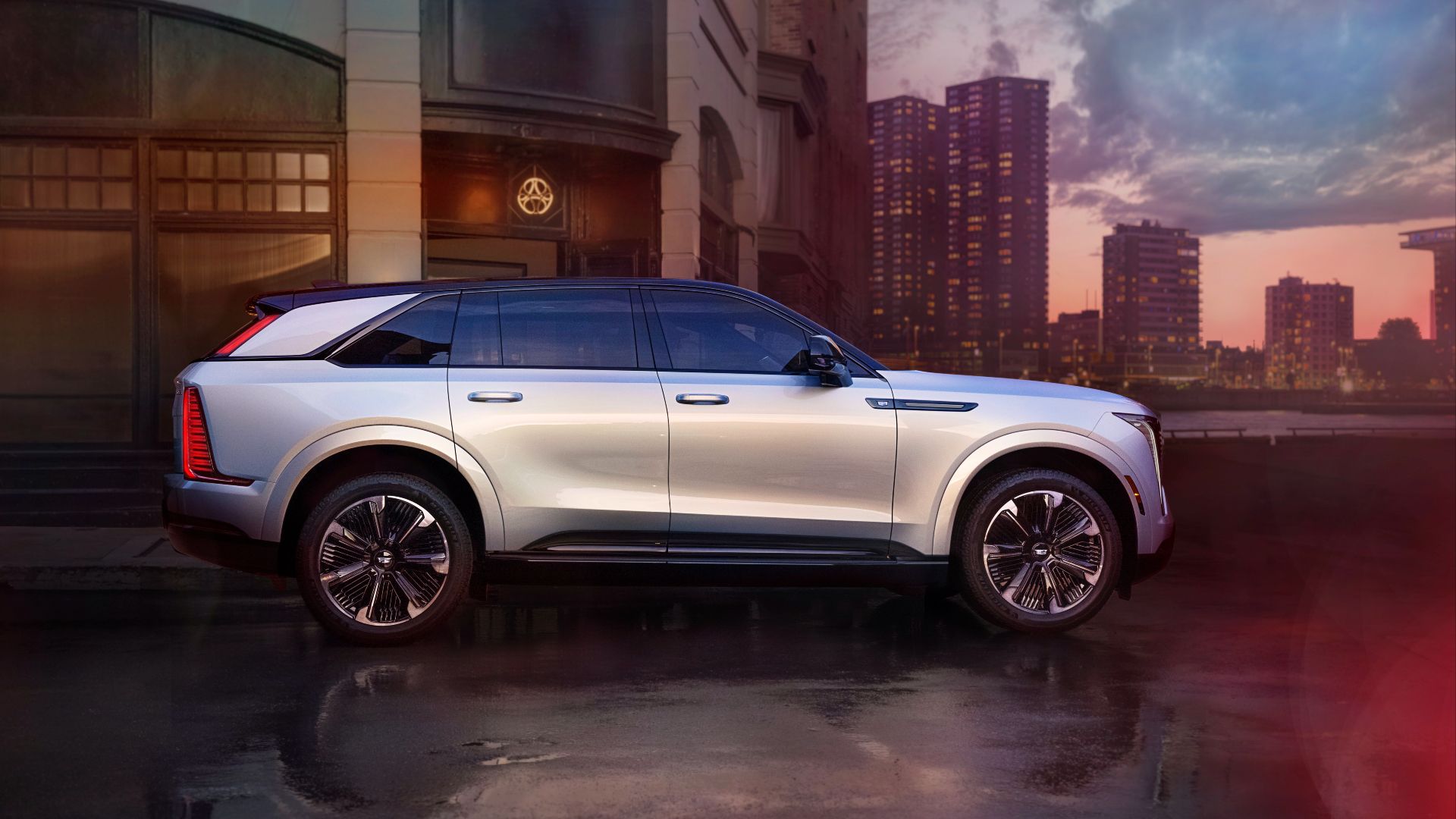
Related
The Electric SUV With The Longest Driving Range In 2025
This electric SUV might offer more range than any other model on the market, but is it really worth the premium price?
1
Cadillac Escalade IQ
Max Cargo Space: 119.1 cubic feet
And finally, what’s the most capacious all-electric SUV for families? Well, the Cadillac Escalade IQ offers staggering amounts of space and more luxury than you might imagine. You get 23.6 cubic feet of room on the way-back, 69.1 behind the second-row, and 119.1 cubes when the interior is configured for maximum cargo space. Is that enough room for ya? If not, there’s also a front trunk that’s good for an additional 12.2 cubes!
The Escalade IQ offers a load of amenities including Super Cruise, GM’s excellent hands-free driving aid that works on limited-access divided highways. You also get a 55-inch pillar-to-pillar screen spanning nearly the whole width of the dashboard, and acres of soft leather and other premium materials.
Performance Specifications
|
Max Interior Cargo Space |
119.1 cubic feet |
|
Rear Cargo Space |
23.6 cubic feet |
|
Front Trunk |
12.2 cubic feet |
|
Total Cargo Space |
131.3 cubic feet |
|
Drivetrain |
AWD |
|
Range |
450 miles (Cadillac estimate) |
|
Charging |
Up to 100 miles in about 10 minutes |
|
Horsepower |
Up to 750 |
When it comes to those all-important drivetrain specs, this beast of an SUV offers up to 750 horses, enough to hit 60 mph in less than 5 seconds. Beyond that, you also have a Cadillac-estimated 460 miles of range, which is very impressive for a vehicle of this size – and weight.
Pros
- Commanding design
- Luxurious interior
- Cavernous space
Cons
- It’s quite expensive
- The SUV is massive
- It weighs a lot
